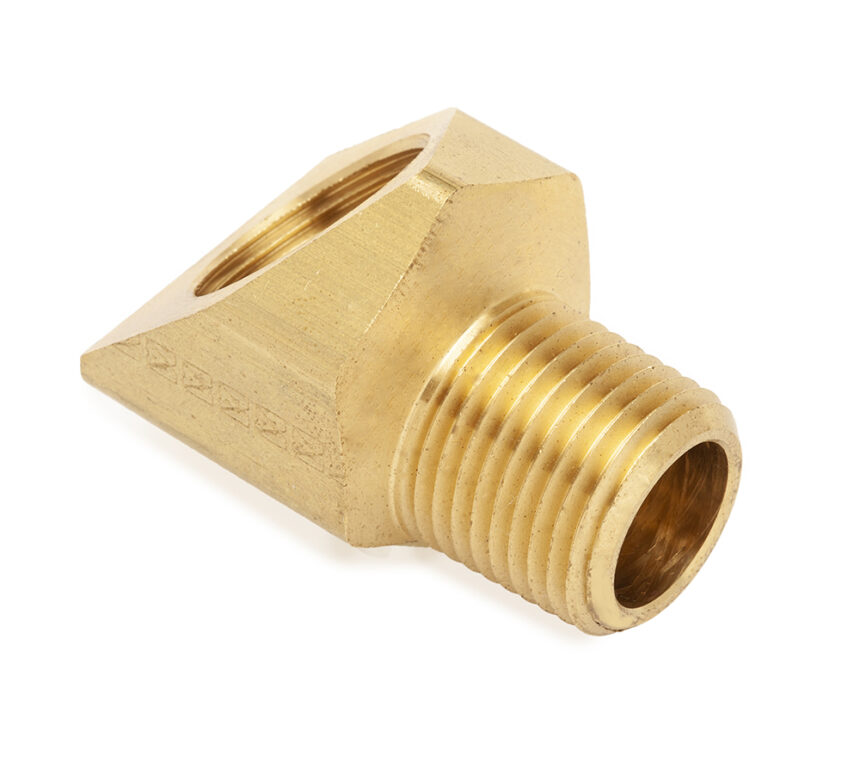It’s likely that you’ve heard of compression fittings, but what exactly is an inverted flare fitting? Comparable to compression fittings, these are helpful in locations where soldering a joint is challenging.
As a result, it’s a useful fix for copper that is flexible rather than rigid and difficult to solder. In this article we are going to deal with inverted flare fitting. Also we will learn about its process to use along with its benefits.
What is an inverted flare fitting?
Inverted flare fitting is a compression fitting that is used when working with metal tubing. They can come from a variety of materials, but soft steel and copper are the most common ones. Flaring tubes is a cold working process that falls under the category of forging operations. Using a specialized assembly tool, the tapered end of the flared tubing is attached to the tapered fitting with a flare nut, creating a leak-tight, pressure-resistant seal.
How to Use an Inverted flare fitting?
Remember that inverted flare fittings are only appropriate for use on flexible copper tubing—they cannot be used on stiff copper pipes. Furthermore, an inverted flare fitting needs a flaring tool, in contrast to compression fittings.
Using this two-piece tool, the end of the copper pipe is reshaped so that it “flarings” to fit into a special inverted flare fitting. Make the flared connection first, then trim the tubing to length, if at all feasible, as the tubing can split when flared.
A flaring tool and two adjustable wrenches are required to get started. It should take you about thirty minutes to join three parts in a union, assuming you have some experience with flaring tools. If not, allow extra time as you become more proficient with the tool.
- Flare the Tubing Ends
- Put the flare nut on first, then flare the tubing’s end.
- Select a hole in the flaring block that corresponds to the outside diameter of the flexible copper pipe.
- Clamp the tool against the tubing.
- After positioning the compression cone in relation to the tubing’s end, tighten the screw.
- When you turn the handle, the cone flares the tubing end.
- After you’ve removed the tubing from the block, thoroughly inspect your work.
- Cut off the flared portion and repeat the process if the end has split.
- Assemble the Pieces
- Place the flare union against a tubing end that has been flared.
- Now, slide the nut down and tighten by hand.
- Repeat the process on the opposite side.
- Tighten & Test
- Take one wrench and place it on the union and a nut.
- A flaring joint should not be overtightened.
- Give each nut a half turn when it’s tight.
- Test after turning on the water.
- Tighten the joint gently until the leak stops if it occurs.
- If the leak continues, dismantle the joint and inspect it to ensure that the tubing was cut squarely. Additionally, confirm that the fitting’s nut was not cross-threaded. Lastly, use two feet on either side of the inverted flare fitting to anchor or support the tubing. The leak should be stopped by one or more of these.
Advantages of using the inverted flare fitting
If you are willing to use the flare fitting, then let me tell you it has multiple number of benefits, given below are the list of few of them are:-
- Strong and Watertight Connections: The curved tip of the tube creates a hermetically tight seal around the conical seat, guarding against leaks.
- Suitability for High-Pressure Applications: Flare fittings’ robust design makes them ideal for use in high-pressure environments.
- Durability: Suitable for demanding applications, flare fittings can tolerate high levels of mechanical stress and vibrations.
Conclusion
Let’s all get together! inverted flare fitting give a solid arrangement for adaptable copper tubing, guaranteeing solid, watertight associations and toughness in high-pressure applications. By acing their establishment, you can successfully address regions where patching is challenging, improving the astuteness and life span of your plumbing or mechanical frameworks.


